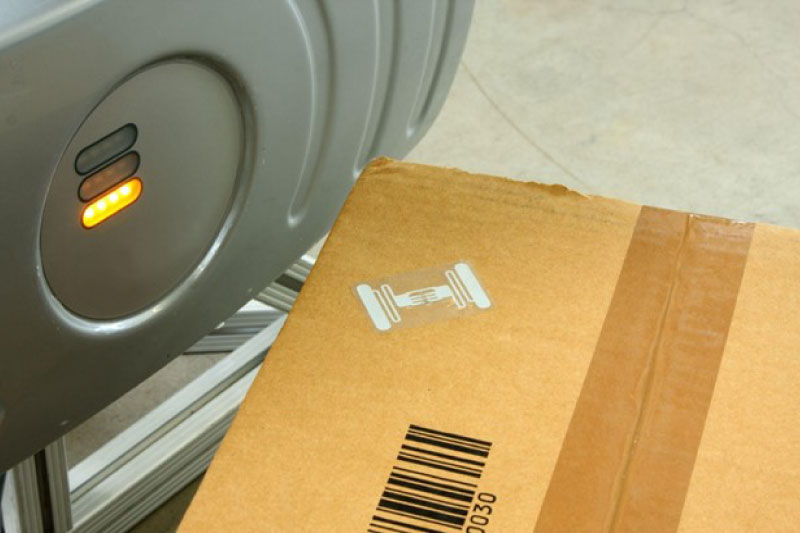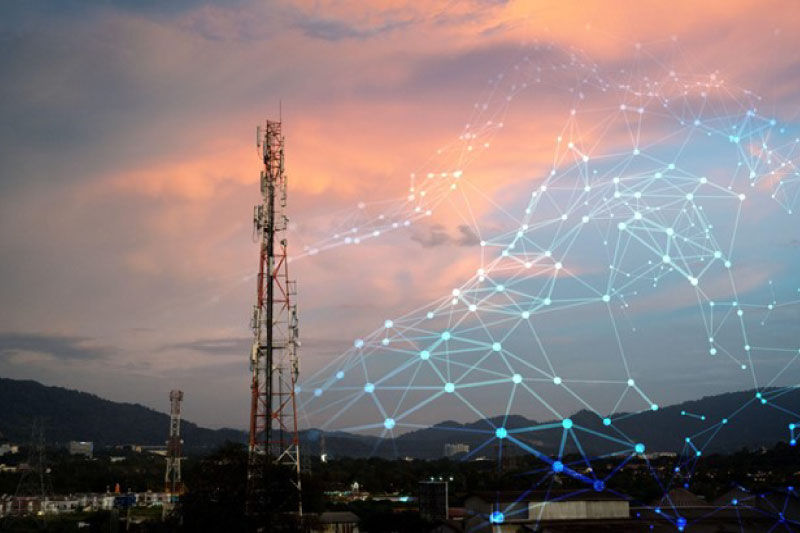Contents
In today’s technologically advanced world, businesses across various industries are increasingly relying on real-time data for efficient operations and improved decision-making. Real-Time Location Systems (RTLS) and Radio Frequency Identification (RFID) are two popular technologies that play crucial roles in asset tracking and management. However, there seems to be some confusion about their differences and applications. In this blog post, we aim to demystify the differences between RTLS and RFID by exploring their unique features, use cases, and benefits.
Understanding RTLS and RFID
Exploring RTLS
RTLS is an advanced technology designed to track and locate assets, people, or objects in real time within a designated area. It employs a combination of different technologies, such as Wi-Fi, Bluetooth, UWB (Ultra-Wideband), RFID, or GNSS, to determine the precise location of assets or people. The key differentiating factor of RTLS is its ability to provide real-time information about the location, movement, and status of tracked entities.
RTLS technology leverages various components, including tags (also known as badges or transponders) attached to the assets or carried by individuals, sensors or receivers strategically placed within the environment, and a central software platform that collects, analyzes, and visualizes the data. The system calculates the location of the tagged assets or individuals with the RTLS tag based on factors like signal strength, time of flight, or trilateration, delivering accurate and up-to-date positioning information.
Exploring RFID
RFID is a widely used technology that uses radio waves to identify and track objects or individuals. Unlike active RFID, which requires a power source, passive RFID tags do not have an internal power supply. Instead, they rely on the energy transmitted by the RFID reader to power the tag and enable communication.
RFID systems consist of three primary components: an RFID reader (or interrogator), an antenna, and RFID tags. These tags – equipped with microchips, antennas, and, if active, a power source – store unique identification data and communicate with RFID readers wirelessly.
Unlike RTLS and RFID technology predominantly focuses on identification and data capture rather than real-time location tracking. When an RFID tag enters the range of an RFID reader, it transmits its unique identifier to the reader, which then communicates with the backend system to retrieve and process the associated information. RFID systems are commonly used for inventory management, supply chain visibility, access control, and asset tracking, but they do not provide real-time location updates.
It is important to note that active RFID, a variant of RFID technology, can provide real-time tracking capabilities. However, it should be acknowledged that the level of precision in tracking with active RFID is not as high as with RTLS. Active RFID is commonly employed in scenarios where broader location information, such as room or warehouse section data, is satisfactory.

Comparing RTLS and RFID
Features
- Accuracy: RTLS provides higher accuracy in determining the exact location of tagged items, typically within a few centimeters or meters, depending on the technology used. Passive RFID, however, is primarily used for identification purposes and provides limited location information.
- Range: RTLS systems usually have a longer range compared to RFID. While passive RFID tags have a limited read range of a few meters, active RFID and RTLS systems can have a range of up to 100 meters or more.
- Real-time tracking: The most significant distinction between RTLS and passive RFID lies in their tracking capabilities. RTLS provides real-time location updates, allowing businesses to monitor and track assets or individuals dynamically. In contrast, RFID focuses on identification and data capture, providing information when an RFID tag comes within range of an RFID reader.
Strengths and Weaknesses
- Ease of implementation: RFID systems are generally easier and less expensive to implement compared to RTLS. RFID tags and readers are relatively low-cost, and the technology is well-established.
- Power consumption: Passive RFID tags do not require a power source, making them low-maintenance and cost-effective. RTLS systems, on the other hand, require batteries, which can increase maintenance costs and complexity.
- Scalability: RTLS systems can be more challenging to scale, as they often require additional infrastructure and calibration for large areas. RFID systems are more easily scalable due to their simplicity and lower cost.

Use Cases and Applications
Applications of RTLS
Healthcare
RTLS plays a vital role in healthcare settings, enabling asset tracking, staff and patient monitoring, and improving overall operational efficiency. It helps locate medical equipment, such as infusion pumps, wheelchairs, or defibrillators, in real time, reducing search times and ensuring availability when needed. RTLS can also enhance patient safety by monitoring their movements or sending alerts in case of emergencies.
Manufacturing and Warehousing
RTLS offers significant benefits in manufacturing and warehousing environments by optimizing workflows, improving retail inventory management, and enhancing worker safety. It enables real-time tracking of goods, components, or raw materials, ensuring efficient supply chain operations and reducing stockouts or overstock situations. RTLS can also monitor worker movements and provide proximity alerts in hazardous areas to minimize accidents.
Logistics and Transportation
In logistics and transportation, RTLS helps track and monitor assets, such as vehicles, containers, or parcels, in real time. This allows for better fleet management, route optimization, and efficient delivery processes. RTLS can also enhance security by providing geofencing capabilities to detect unauthorized movements or theft.
Hospitality and Tourism
In the hospitality industry, RTLS enables efficient management of hotel resources and enhances guest experiences. It can track the location of housekeeping staff, manage room occupancy and availability, and streamline the delivery of guest requests. Additionally, RTLS can provide personalized services, such as indoor navigation or location-based promotions, to enhance the overall guest experience.
Mining and Oil/Gas Industry
RTLS finds applications in hazardous environments like mines or oil/gas facilities, where worker safety is paramount. It helps monitor personnel movements, ensuring compliance with safety protocols and providing immediate assistance in case of emergencies. RTLS can also track equipment or vehicles, optimizing their usage and minimizing downtime.
Applications of RFID
Supply Chain Management
RFID technology revolutionizes supply chain management by enabling automatic identification, tracking, and tracing of goods throughout the entire logistics process. RFID tags attached to products or packaging facilitate real-time inventory visibility, reducing manual handling, improving accuracy, and optimizing order fulfillment processes. This enhances efficiency, reduces errors, and provides insights for demand forecasting.
Retail and Inventory Control
RFID is widely adopted in the retail industry to streamline inventory management and improve customer experiences. By tagging individual items, retailers can accurately track stock levels, prevent stockouts, and automate replenishment processes. RFID-enabled systems also enable seamless checkout experiences, self-service kiosks, and anti-theft systems, enhancing operational efficiency and reducing theft or shrinkage.
Access Control and Security
RFID is commonly used for access control systems in buildings, campuses, or restricted areas. RFID badges or cards grant authorized personnel access while restricting unauthorized entry. The technology provides convenience and quick authentication and can be integrated with other security measures like surveillance systems or alarms.
Healthcare Asset Tracking
RFID plays a significant role in healthcare asset tracking, similar to RTLS. By attaching RFID tags to medical equipment, devices, or medication containers, healthcare facilities can locate, monitor usage, and manage inventory more efficiently. RFID-enabled asset tracking reduces loss, ensures proper maintenance, and improves patient care by enabling quick access to critical equipment.
Authentication and Anti-Counterfeiting
RFID technology is employed for product authentication and anti-counterfeiting measures in industries like pharmaceuticals, luxury goods, or electronics. RFID tags with unique identifiers and secure authentication protocols help verify the authenticity of products, track their lifecycle, and prevent counterfeit items from entering the market.
These are just a few examples of the diverse range of applications and industries where RTLS and RFID technologies have proven their value. Both technologies offer unique benefits and can be tailored to specific use cases, allowing businesses to optimize operations, enhance efficiency, and improve overall visibility and control over their assets or processes.
However, it is also worth mentioning that both RTLS and RFID can find their own applications across many of the same industries, albeit for different purposes. In healthcare, RFID is commonly employed for patient identification, while in warehouses, it is utilized for inventory tracking. In the hospitality and tourism sectors, RFID is frequently used for ticketing purposes. Therefore, both technologies can be considered complementary, with each serving unique roles within their respective domains.

Choosing between RTLS and RFID
Choosing between RTLS and RFID for your business requires careful consideration of your specific needs, objectives, and operational requirements. Here are some factors to consider when making this decision:
Tracking Requirements
Assess the level of tracking accuracy and real-time information you need. If your business operations heavily rely on real-time location updates and precise tracking of assets or personnel, RTLS may be the better choice. RTLS provides continuous, up-to-date location data, enabling dynamic monitoring and immediate response. On the other hand, if your primary focus is on identification and data capture without real-time tracking, RFID can be a cost-effective solution.
Location Precision
Consider the level of location precision required for your business processes. RTLS technologies, such as UWB or infrared-based systems, can offer high precision, often within centimeters or meters. This level of accuracy is beneficial in scenarios like manufacturing assembly lines or healthcare facilities where precise asset tracking or personnel monitoring is crucial. RFID technology typically offers lower location precision, typically within a few meters.
Cost and Scalability
When evaluating the cost implications of implementing either technology, it is crucial to keep in mind that the overall cost would depend on the specifics of the implementation and can vary significantly based on the hardware chosen, the scale of the implementation, and the complexity of the setup. RTLS solutions, with their specialized infrastructure requirements such as receivers or sensors, as well as real-time data processing capabilities, are generally more complex and expensive. On the other hand, RFID technology tends to be more cost-effective and scalable, particularly when managing large volumes of items or assets. RFID tags and readers are relatively affordable and can be easily deployed across various locations.
Industry and Use Case
Consider the specific industry and use case requirements. RTLS is well-suited for industries such as healthcare, manufacturing, logistics, and hospitality, where real-time tracking and precise location information are critical. RFID is widely adopted in industries like retail, supply chain management, and access control systems, where identification, inventory visibility, and process automation are key priorities. Understanding the typical applications and industry-specific benefits can guide your decision.
Infrastructure and Deployment Complexity
Assess the complexity and infrastructure requirements associated with each technology. RTLS implementations often involve setting up a network of sensors, receivers, or beacons strategically placed throughout the environment. This infrastructure requires careful planning and installation. RFID systems, while relatively simpler to deploy, still require consideration of reader placement and integration with backend systems for data management.
Integration and Compatibility
Consider the compatibility of the technology with your existing systems and workflows. Evaluate the ease of integration with your current infrastructure, software platforms, or backend systems. Determine whether your business can leverage the data captured by the chosen technology effectively and integrate it with other operational processes or analytics tools.
Ultimately, the choice between RTLS and RFID depends on your business requirements, budget, scalability needs, and the level of tracking precision and real-time information you seek. It can be beneficial to consult with industry experts or solution providers who can assess your specific needs and provide guidance tailored to your business objectives.
Final Thoughts on RTLS and RFID
Real-time location systems and radio frequency identification are both valuable technologies with distinct differences in their capabilities and applications. An RTLS solution offers real-time location tracking and precise asset or individual positioning, while RFID primarily focuses on identification and data capture. It is important to note that RFID can also provide real-time information, though typically with less precision and not in all cases. Having a clear understanding of these differences is crucial for businesses to select the most suitable technology for their specific requirements.
By leveraging the strengths of each technology, organizations can optimize their operations, enhance security, streamline processes, and gain actionable insights from real-time or near-real-time data. Whether it is achieving precise asset tracking or automating inventory management, choosing between RTLS and RFID should be based on the desired level of location accuracy, tracking frequency, and the specific needs of the business.
If you are considering implementing RTLS technology in your business, Litum is the right choice for you. We specialize in helping businesses improve the safety of their employees, secure assets, and enhance workflow efficiency across various industries, including aviation, warehousing, healthcare, and manufacturing.
With Litum RTLS, businesses have access to real-time data for streamlined decision-making and optimal workflow optimization.
Join the digital revolution today. Contact Litum to learn more about our RTLS solutions.






